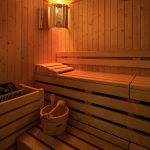Catching some air on the slopes this season? Keep in mind, you’re also catching ultraviolet rays from the sun.
Obviously, wearing proper eye protection when participating in winter outdoor sports is meant to keep snow, ice, tree branches, etc. out of direct contact with the eyes, and wearing sunglasses can help visibility by cutting down on the glare of sunlight reflected from snow and ice.
But proper eye protection is also called for to prevent eye injuries from a form of solar radiation our eyes can’t perceive: ultraviolet light. Although the sun’s rays are at their minimum intensity down here on earth during the winter months, and though we often associate overexposure to ultraviolet rays with painful sunburns during the summer months, it’s still possible to be exposed to the harmful effects of ultraviolet light this time of year. Consider this: Fresh snow can reflect about 80 percent of the ultraviolet radiation it receives from the sun, compared to beach sand, which on average reflects only about 15 percent.
Many – but not all – of the more harmful forms of solar radiation are filtered by the atmosphere by the time they reach us down here near or at the bottom of the troposphere. Within the ultraviolet section of the spectrum, the harmful wavelengths that reach us via sunlight are limited primarily to long wave ultraviolet A (UVA) and short wave ultraviolet B (UVB). And overexposure to either form can cause damage to the eyes.
Spending long hours in the sun without eye protection can damage the eyes, a number of studies have shown. The American Academy of Ophthalmology recommends people wear sunglasses with an ultraviolet-absorbent rating of 99 percent – or greater.
Proper sunglasses are recommended to protecting your eyes from sun-related damage, and they should be worn anytime one is outdoors, especially when exposure is pro-longed, like when participating in winter sports, especially at high altitudes; or when using medications that can cause sensitivity to light or are affected by light.
The Prevent Blindness organization strongly recommends that both adults and children always wear both a wide-brimmed hat or cap and the proper UV-rated sunglasses, particularly wrap-around sunglasses since they protect both the eyes and the skin around them. There are also many types of sports eye protection glasses that offer UV protection, too, and asking an eye doctor for his or her recommendation is always advisable.
Regular sunglasses are meant to work to filter out some wavelengths of sunlight, but they are no substitute for light produced or reflected in certain other situations. Specialized eye protection is necessary in situations in which someone is exposed to light sources such as tanning beds or lamps or sunlight, particularly at high altitudes. Exposing the naked eye to such light sources without proper protection can cause a painful condition to the cornea known as photokeratitis. Solar ultraviolet light exposure during the wintertime – particularly at high altitudes – is commonly known as snow blindness. The condition is usually managed by removing oneself from the source of ultraviolet radiation, covering the corneas, and administering pain relief, but it can damage the retina, leading to a permanent loss of central vision.
For people who wear contact lenses, it is important to keep in mind that they may not protect the eyes from UV light. Fortunately, there are contact lenses available that provide built-in UV protection.
So have fun this season, but when it comes to protection, don’t forget about your eyeballs!
References:
- American Academy of Ophthalmology, aao.org
- http://www.preventblindness.org/
- Brozen, Reed, and Christian Fromm. “Ultraviolet Keratitis.” http://emedicine.medscape.com/article/799025-overview






